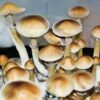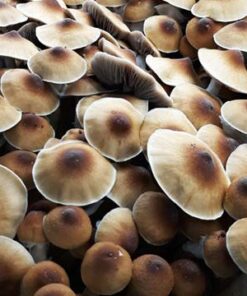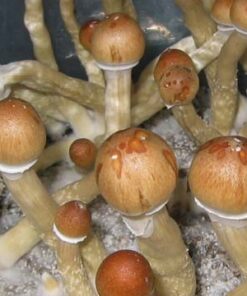Ecuador Spores
$25.00 – $200.00Price range: $25.00 through $200.00
The Ecuador cubensis fruit can grow tall with amazing caramel-brown mushroom caps. Found 1000m up in the mountains.
Buy Ecuador Spores In DC Online
Ecuador Spores mushrooms for sale in DC online delivery, and their spores are also some of the most sought after psilocybe cubensis magic mushrooms ever found. Spores from the Ecuador Spores mushroom are available here at SporeStore.com because you asked for them! Find both mushroom spore syringes and also mushroom spore prints. This psilocybe cubensis magic mushroom was first discovered on a farm growing in a pile of dung and straw as its mushroom substrate in Ecuador. There is no psilocybin or psilocin contained within magic mushroom spores, making them completely legal to purchase and posses in most jurisdictions throughout the USA. As well as make sure to check your local laws before ordering. The original Ecuador Spores mushroom spores’ genetics from the true Ecuador Spores psilocybe cubensis mushrooms from Ecuador are brought to you by SporeStore.com, the leader in mushroom spores.
Spores from this strain are in abundance as it’s a healthy spore depositor.
Ecuador Spores magic mushrooms are easy to grow. Check your local mushroom growing laws. Growing mushrooms for identification and taxonomy purposes? We have your spores!
In addition to the Ecuador Spores spores, here are some other mushroom spores that you may be interested in reviewing: Alcabenzi mushroom magic spores, B+ mushroom spores which is also called B Plus mushroom spores, PES Amazonian mushroom spores, PES Hawaiian mushroom spores, Malaysia spores
Furthermore check out our new Mushroom Grinder!
Mushroom Capsules found here…
Ecuador Spores for sale in DC
Habitat: Bovine, Equine Dung and Enriched Soils
Climate: Subtropical
Strain Origin: Unknown
Cap: 50+ mm in diameter, convex to broadly convex to plane at maturity. Reddish cinnamon brown maturing to golden brown to light yellow because the surface is dry with pronounced and persistent remnants of universal veil on cap (spots) and the flesh is white soon bruising bluish green.
Stem: 125+ mm in length, yellowish. Flesh bruising bluish green where injured. Persistent membranous annulus (ring) from partial veil that becomes dusted with purple brown spores at maturity.
Gills: Attachment adnate to adnexed. Grayish coloration in young fruit bodies becoming nearly black in maturity.
Spores: Dark purplish brown, subellipsoid on 4-spored basidia
Storage: Store in a dark, cool and dry place and use within six months after delivery!
Taxonomy:
Kingdom: Fungi
Division: Basidiomycota
Class: Agaricomycetes
Order: Agaricales
Family: Strophariaceae
Genus: Psilocybe
Spores: purplish brown to dark brown, 11.5 – 17 x 8 – 11 µm, ellipsoid
Habitat and distribution in nature:
Rye grain, wheat straw, horse or cow manure. This species can be found in the subtropical and tropical climate zones all around the globe under the following conditions: Spawn run incubation: 28 °C | Primordia formation: 23.3 – 25.6 °C | Fruiting: 23 – 26 °C
A 2011 study also found that more than a year after participants had a single psilocybin experience, their self-reported measures of openness remained significantly elevated, which researches in this study and beyond attribute to a somewhat mysterious but powerful aspect of a mushroom trip: the mystical experience.
Buy Ecuador Spores in DC
These subjective effects, such as feelings of interconnectedness, are likely a result of psilocybin’s ability to decrease the interconnectivity of integration hubs in the brain. In plain speak, that means psilocybin allows for more “cross-talk” between regions of the brain that are typically segregated. Researchers speculate that this enables a state of “unconstrained cognition,” meaning the ways we typically organize, categorize, and differentiate the aspects of conscious experience are broken down, and thinking becomes more flexible. To understand how this might be beneficial, it helps to know that similar brain activity patterns are also observed during various states of meditation.
Habitat: Bovine, Equine Dung and Enriched Soils
Climate: Subtropical
Strain Origin: Ecuador
Cap: 50-75 mm in diameter, convex to broadly convex to plane with obtuse umbo at maturity. Dark reddish cinnamon brown maturing to golden brown. Surface dry with pronounced and persistent remnants of universal veil on cap (spots). Flesh white soon bruising bluish green.
Stem: 200+ mm in length, pale yellowish to buff. Flesh bruising bluish green where injured. Persistent membranous annulus (ring) from partial veil that becomes dusted with purple brown spores at maturity.
Gills: Attachment adnate to adnexed. Grayish coloration in young fruit bodies becoming nearly black in maturity.
Spores: Dark purplish brown, subellipsoid on 4-spored basidia.
| Qty | Single Syringe, 2Spore Syringe, 4Spore Syringe, 10Pack Syringe |
|---|
Be the first to review “Ecuador Spores” Cancel reply
Related products
Mushroom Spores
Mushroom Spores
Mushroom Spores
Psilocybin Cubensis
Mushroom Spores
Mushroom Spores
Mushroom Spores
Mushroom Spores












Reviews
There are no reviews yet.